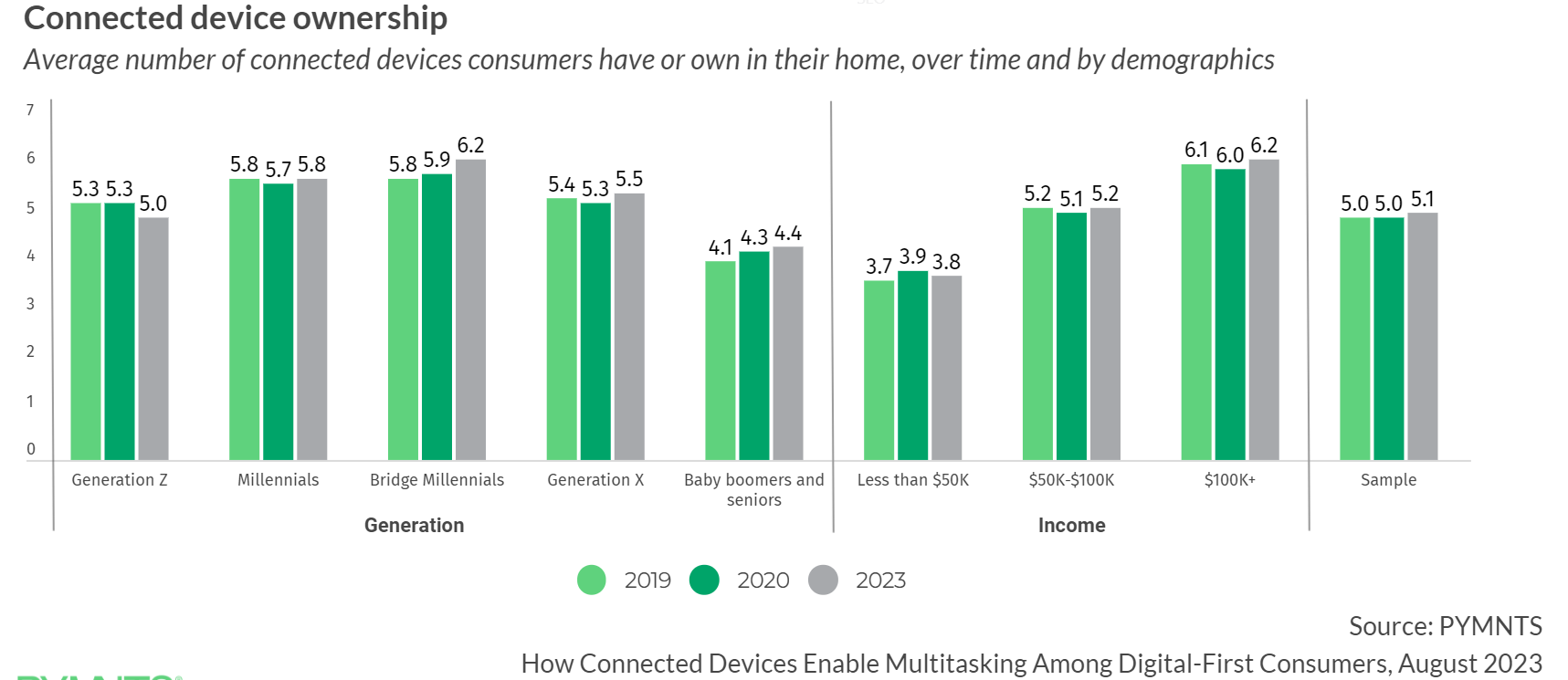
From smartphones and smartwatches to smart TVs and cars with connected capabilities, consumers’ device portfolio has undergone significant changes over the years, primarily driven by the advancements in technology and the evolving consumer demands in a digitally driven world.
According to data from PYMNTS Intelligence, while the number of connected devices consumers use hasn’t changed much between 2019 to 2023, the types of devices they own have evolved.
Some, like Google’s recently launched Pixel 8 smartphones, now incorporate advanced artificial intelligence (AI) and machine learning (ML) capabilities, enabling users to summarize webpages, measure their body temperature or process more data directly on the device itself and in the cloud.

The tech giant also launched Google Pixel Watch 2, an upgrade over its first smartwatch launched in 2022, alongside the smartphones, further demonstrating the increasing capabilities of these wearable devices.
Starting at nearly $350, the new smartwatch features AI-powered health tracking features including a sensor that can identify potential indicators of stress using a ML algorithm that factors in heart rate, heart rate variability, and skin temperature. This comes at a time when consumers are more conscious of their physical and mental health, and are proactively taking steps to improve their overall well-being.
Overall, PYMNTS Intelligence data shows that the average consumer owns six of these connected devices, and this number varies across demographic groups.
Millennials and bridge millennials tend to be the most connected, owning an average of seven devices. The number of devices owned also increases with income, with high-income consumers owning seven devices compared to the four owned by low-income individuals.
Drilling down into the data shows that while smartphones continue to be the most prevalent device, smartwatches have surged in popularity among millennials and bridge millennials, displacing voice-controlled assistants as the sixth most commonly owned device among this demographic.
“More consumers now own smartwatches, at 33% of the population, than in 2020 or 2019, when 23% and 19%, respectively, owned one,” the study noted.
Additionally, the study highlighted an increase in the ownership of smart home devices such as smart refrigerators, which 9% of consumers currently own, up from 5% in 2019. Similarly, the ownership of connected thermostats has risen, with 15% of consumers currently owning one, compared to 10% in 2019.
As PYMNTS CEO Karen Webster noted in a recent article, “weekends and weekdays now look the same [for a connected American consumer in 2023] as apps and smartphones break down the constraints once imposed by the physical world.”
For instance, she pointed to how the traditional Saturday trip to the grocery store has evolved to now using apps, saved shopping lists and aggregators to conveniently deliver groceries anytime during the week “— and purchased while streaming a favorite movie, waiting in the doctor’s office for an appointment, or on the airplane home before takeoff.”
This pattern also extends to retail shopping, with connected devices and apps providing consumers with a greater range of time-saving choices and flexibility such as gauging how clothing fits or how furniture complements a room before committing to a purchase — all while carrying out other tasks.
Looking ahead, the potential of advanced technologies to redefine the landscape of connected device ownership and access holds huge promise. Generative AI, for example, paves the way for a future where the boundaries between the physical and digital realms continue to blur, ultimately transforming the way consumers live, work, and engage with the world.
As Webster wrote, “a new generation of more technologically advanced connected devices and emerging technologies like generative AI will make this connected multitasking an embedded part of the consumer’s daily routine: more integrated, easier, smarter, and more personalized.”